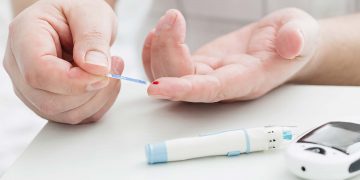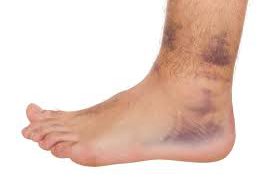To avoid diabetes is to avoid the diabetic complications. Rarely have I seen any diabetics who suffer only from diabetes symptoms. They almost always for some reason seem to be suffering from other ailments.
Diabetes seems to be the gateway to many other illnesses. The good news is that diabetes can absolutely be prevented, delayed or even reversed.
The bad news is that most of us prefer to avoid the issue thinking that we are invincible or that nothing bad will ever happen to us, it will only happen to the next person.
Can we really keep putting off the all important health concerns until much later? The thing is the body normally give us some warning signs but are we heeding the message. Or, are we going to wait until it is too late.
Researching the first signs of diabetes symptoms have revealed a lot. It forces me to have a real good look at my own health and ask myself some serious health questions.
Questions like am I doing everything I can to protect my health against diabetic complications and can I really afford to do nothing.
I know there are a lot of people suffering with complications of diabetes and a lot of even famous people with diabetes.
This shows that diabetes is the respecter of person. I am sure those famous people suffering from diabetic complications would do or give anything to get their full health back.
These are some of the scary diabetic complications:
- Diabetic Neuropathy (nerve disease)
- Diabetic Retinopathy (eye disease)
- Diabetic Nephropathy (kidney disease)
- Diabetic Ketoacidosis (high level of acidic ketone bodies in the blood)
- Diabetic gastroparesis (stomach illnesses)
- Atherosclerosis (vessel disease)
All of these diabetic complications are so scary. If you have to choose between any of these illnesses or being healthy which would you choose?
Prevention is better than cure. Prevention starts from knowing the facts and rules of the health game. Play the health game to win.
Diabetic Neuropathy – diabetic complications of the nerves
Diabetic neuropathy is a common complication of diabetes. It is responsible for damage to the nerves in diabetics that are responsible for sensations such as pain.
You might be wondering who wants to feel pain but the ability to feel pain and other sensations are essential otherwise you might be injured but don’t even know it until it is too late (e.g. when the wound is infected).
There are four types of diabetic neuropathy: peripheral, autonomic, proximal and focal.
Diabetic Peripheral Neuropathy
Diabetic peripheral neuropathy mostly affected the outer extremities of the body such as the arms, legs and feet.
It is as a result of damage to the nerves in the outer extremities that results in a loss of sensation.
This lack of sensation increases the risk of injuries. The feet are definitely more at risk since you probably don’t check it every day.
The problem is, if there is a lack of sensation in the feet injuries and sores may go unnoticed.
Sometimes when diabetics do realise that their feet have been injured it is often too late.
At this time infections would have already developed. This is the number one reason why some diabetics face the prospect of their feet being amputated.
Symptoms of Diabetic Peripheral Neuropathy
may include:
- Tingling
- Numbness
- Burning
- Pain in toes, fingers, arms and legs
Diabetic Autonomic Neuropathy
Diabetic autonomic neuropathy is nerve damage that tends to affect the internal systems and organs such as the digestive system (especially the stomach), urinary system, blood vessels, and sex organs.
Symptoms of Diabetic Autonomic Neuropathy
Digestive system:
- Bloating
- Diarrhoea
- Constipation
- Heartburn
- Nausea
- Vomiting
- Feeling full after small meals
Other diabetic complications of note:
- Impotence
- Vaginal dryness
- Hypoglycaemic unawareness
Diabetic Proximal Neuropathy / diabetic amyotrophy
Diabetic proximal neuropathy or diabetic amyotrophy causes pain in the bigger muscles of the body and tend to affect one side only.
Symptoms of Diabetic Proximal Neuropathy / Diabetic Amyotrophy
- Pain or weakness in the legs (normally in the thigh).
- Pain in one side of the body ( hip, buttock or thigh)
- Muscle in the leg felt weak.
- Problems moving from sitting to standing or climbing stairs
Diabetic Focal Neuropathy
Diabetic focal neuropathy can also appear suddenly and affect specific nerve groups.
It most often affects nerves in the head, torso, or leg, causing muscle weakness or pain.
Symptoms of Diabetic Focal Neuropathy
may include:
- double vision
- aching behind the eye
- paralysis on one side of the face (Bell’s palsy)
- severe lower back pain or pain in the pelvis area
- pain in the front of a thigh
- Pain on the outside of the shin or the inside of the foot.
- Severe chest or abdominal pain
Focal neuropathy is painful and unpredictable and occurs most often in older adults with diabetes.
People with diabetes sometimes tend to also develop nerve compression problems (entrapment syndromes).
Carpal tunnel syndrome is a very common type of entrapment syndrome and causes numbness and tingling of the hand and sometimes muscle weakness or pain.
For further information on diabetic neuropathy and other diabetic complications visit NIDDK @ http://diabetes.niddk.nih.gov/dm/pubs/neuropathies/#focalneuropathy
Diabetic Retinopathy – diabetic complications of the eyes
Diabetic retinopathy is one of a number of eye conditions that affects diabetics as a result of complications with their diabetes. It is also one of the leading cause of blindness in the United Kingdom.
Diabetic retinopathy is responsible for damage to the blood vessels in the eye. This tiny blood vessel nourishes the retina at the back of the eye.
The retina is the light sensitive tissue at the back of the eyes.
This disease damages the eyes by causing the blood vessels to swell and sometimes leak in the eyes.
The leakage may be confined to the retina or may spread to the vitreous gel in the eye.
Untreated this eye disease could cause vision loss. Before causing blindness it may go through four different stages according to the eye institute of America.
These four stages of diabetic complications of the eyes are:
- Mild Nonproliferative Retinopathy – The appearance of small areas of balloon-like swelling in the retina’s tiny blood vessels.
- Moderate Nonproliferative Retinopathy – Some of the blood vessels that nourish the retina are blocked.
- Severe Nonproliferative Retinopathy. Many more of the blood vessels that nourish the eyes are blocked, depriving several areas of the retina of their blood supply.
- Proliferative Retinopathy. The growth of new blood vessels that are abnormal and fragile may break and cause eye damage or vision loss.
The growth may be along the retina and / or along the surface of the clear, vitreous gel that fills the inside of the eye.
How does it cause vision loss?
1. Fluid may leak into the centre of the eyes (macular) that deals with straight ahead vision. The fluid causes the macular to swell blurring vision (macular edema).
2. Abnormal blood vessels that are weak and fragile may develop and then leak blood in the centre of the eyes severely blurring vision or vision loss.
Symptoms of Diabetic retinopathy
It does not cause any noticeable symptoms until significant damage has occurred and complications have developed.
Late symptoms of diabetic complications of the eyes are:
Tiny spots appearing
Dark streaks appearing
Blurred vision
Partial or total loss of vision
If any of these symptoms appear it is essential that you visit your eye care specialist.
Since symptoms sometimes do not appear it is essential that you visit your eye care specialist at least once per year.
The most common of the eye conditions affecting people with diabetes apart from Retinopathy, damage to the blood vessels in the retina, include:
- Cataract—clouding of the eye’s lens.
- Glaucoma—increase in fluid pressure inside the eye that leads to optic nerve damage and loss of vision
If you need further more comprehensive information on this and other eye problems please visit the National Eye Institute.
Diabetic nephropathy – diabetic complications of the kidneys
Diabetic nephropathy is a complication of diabetes which affects the kidneys. The most common is urinary tract infection.
The kidneys affected by diabetes tend to look abnormal under the microscope. It shows up with scarring and swelling in the filtering elements.
This damage to the filtering elements causes protein to leak into the urine.
Over time the high blood sugar levels can damage your kidneys. The kidneys are filters that clean the blood.
If they are damaged, waste and fluids will build up in your blood instead of leaving your body.
The kidneys are essential organs:
- they filter and eliminate the waste products of metabolism
- they have a central role in controlling blood pressure and fluid balance in the body
- They produce the key hormone, erythropoietin, which stimulates the bone marrow to manufacture red blood cells.
People with very poor kidney function require some form of artificial kidney support (dialysis) or a kidney transplant.
Because the kidneys have a central role in controlling blood pressure, it’s common for people with diabetic kidney disease to have raised blood pressure.
High blood pressure accelerates the decline in kidney function in nephropathy – in other words the two problems multiply each other’s effect.
Symptoms of Diabetic nephropathy –
There are no symptoms of diabetic nephropathy in the early stages. The only sign of kidney damage may be small amounts of protein leaking into the urine (microalbuminuria).
Normally, protein is not found in urine except during periods of high fever, strenuous exercise, pregnancy, or infection.
As the diabetic kidney disease progresses, your kidneys cannot do their job as well.
Therefore the toxins remain in the body. Since your kidneys can no longer balance the chemicals in your blood. You may:
- Lose more protein in your urine (macroalbuminuria, also known as overt nephropathy).
- Have higher blood pressure.
- Have high cholesterol and triglyceride levels.
You may have symptoms if your nephropathy gets worse. These symptoms include:
- Swelling (edema), first in the feet and legs and later throughout your body.
- Poor appetite.
- Weight loss.
- Weakness.
- Feeling tired or worn out.
- Nausea or vomiting.
- Trouble sleeping.
If the kidneys are totally damage then dialysis would be necessary of kidney transplant. For further information relating to treatment, diagnosis please visit netdoctor, webmed or medlineplus.
Diabetic gastroparesis- diabetic complications of the stomach
Diabetic gastroparesis is the delaying or slowing of the movement of food from the stomach to the small intestine caused by damage to the vagus nerve.
The damage is as a result of years of high blood sugar levels. Gastroparesis can occur in either type 1 or type2 diabetes.
It sometimes leads to poor glucose control because of the slow transit of feed to be converted into glucose.
The high sugar levels in the blood cause chemical changes in the nerves which then damages the blood vessels that carry oxygen and nutrients to the nerves.
Over time, high blood glucose will damage the vagus nerve.
What are the symptoms of gastroparesis?
The main symptoms of diabetic complications of the stomach are:
- heartburn
- pain in the upper abdomen
- nausea
- vomiting of undigested food—sometimes several hours after a meal
- early feeling of fullness after only a few bites of food
- weight loss due to poor absorption of nutrients or low calorie intake
- abdominal bloating
- high and low blood glucose levels
- lack of appetite
- gastroesophageal reflux
- spasms in the stomach area
Eating solid foods, high-fibre foods such as raw fruits and vegetables, fatty foods, or drinks high in fat or carbonation may contribute to these symptoms.
The symptoms may be mild to severe, depending on the person.
Symptoms occur frequently in some people and less often in others.
Many people with gastroparesis experience a wide range of symptoms which is sometimes very difficult for the physician or health care professional to diagnose.
Atherosclerosis / Arteriosclerosis – diabetic complications of the arteries
Diabetes increases the risk of atherosclerosis. It is a disease in which fatty material, such as cholesterol, is deposited along the walls of arteries, forming plaques and atheromas.
The arteries are flexible, elastic and carry oxygen and nutrient around the body. In diabetes, hyperglycaemia, the high blood sugar damages the arteries making them thick, hard and rigid.
This rigidity plus the fatty deposits on the walls of the artery makes it more difficult for blood to pass through the vessels resulting in damage to the major organs.
It could result in stroke or even cause heart attack.The narrowing of the blood vessels can affect any part of the body, including the eyes, kidneys and legs.
It is referred to as peripheral arteriosclerosis disease (PAD).
The loss of elasticity or the hardening of the blood vessels can also contribute to the development of hypertension (high blood pressure) and erectile dysfunction.
Symptoms of diabetic complications of the arteries may include:
- Chest pain (angina),
- Numbness or weakness in arms and legs,
- Slurred speech,
- Drooping muscles in your face, or
- leg pain when walking
These are just some of the complications of diabetes. The best way to prevent these complications is to manage your blood glucose levels if you are a diabetic.



















